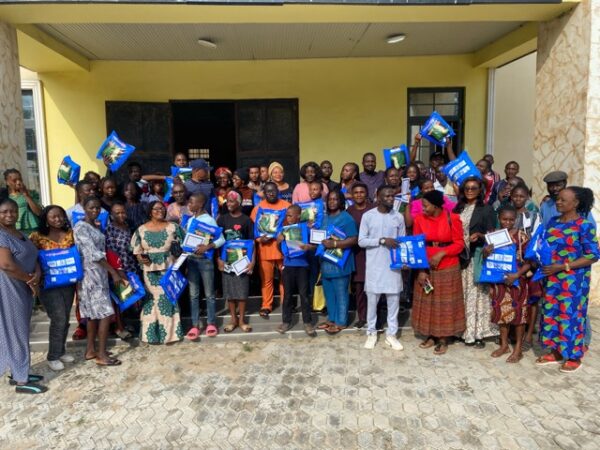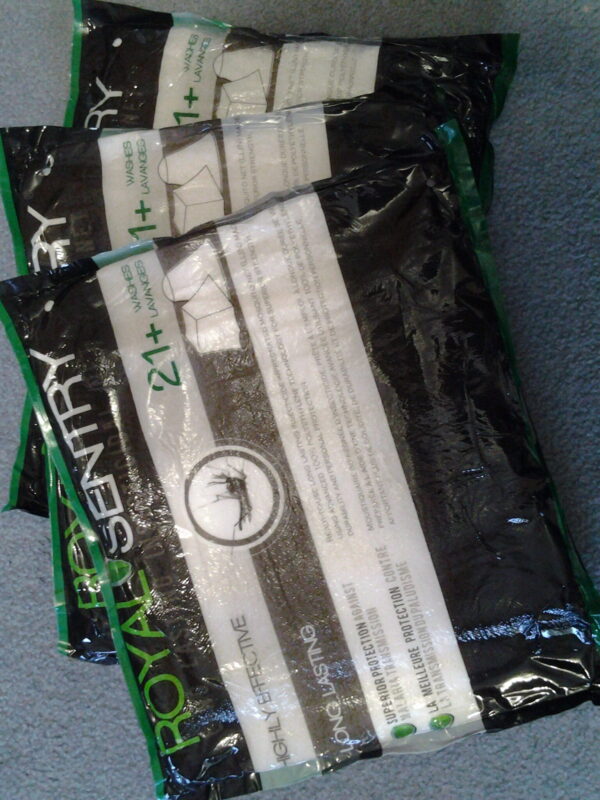Mosquito Nets
As a general rule, most malaria carrying mosquitoes bite at night; mosquitoes that spread dengue and dengue hemorrhagic fever (DHF) bite during the day. (In some cases, people travelling through dark forests during daylight hours can be bitten by malaria-infected mosquitoes.)
Mosquito nets, if properly used and maintained, can provide a physical barrier to infected mosquitoes, both in daylight hours if people are sleeping or resting during the day and at night.
At the present time there are 3 basic types of mosquito nets, untreated nets, Insecticide Treated Nets (ITNs) and Long Life Insecticide treated Nets (LLINs). ITNs are nets that need to be treated once a year with a special chemical solution that ensures their continued effectiveness.
LLINs are nets that do not have to be treated for three years or more.
Whilst an ordinary mosquito net will protect a person from mosquito bites, the ITN and LLIN are much preferred as the chemical in the nets also kills the mosquito without harming the person underneath the net. Currently permethrin is the chemical most commonly used to treat mosquito nets, although new chemicals are constantly under development. Permethrin is a man-made insecticide, structurally similar to a naturally-occurring chemical called pyrethrum. Pyrethrum was initially derived from the crushed dried flowers of the daisy Chrysanthemum, whose insecticidal properties have been recognized since the 18th century. Permethrin is safe to use if handled properly.
Maintenance of ITNs is very important if they are to remain fully effective. This means that the nets need to be re-treated with insecticide and that any tears that occur in the net are promptly repaired.
Cost is also a significant factor. For people living in developed economies insecticide treated nets (ITNs) are relatively cheap to buy, however, in developing nations the actual cost of buying the net and re-treating it is prohibitive for many families living in abject poverty.
..for mosquito nets to make a difference in the war against malaria they need to be affordable, have long lasting treatment and allow ventilation…
What are LLIN Nets?
Long-Lasting Insecticidal Nets (LLINs) are a highly effective tool in the fight against mosquito-borne diseases, particularly malaria. These nets are treated with insecticides that are designed to last for several years, even after multiple washes. LLINs provide both a physical barrier and a chemical deterrent to mosquitoes, making them an essential component of malaria prevention strategies.
Benefits of Using LLINs:
-
Effective Protection: LLINs are treated with WHO-recommended insecticides that kill or repel mosquitoes. This dual action significantly reduces the chances of mosquito bites and subsequent malaria transmission.
-
Durability: Unlike untreated mosquito nets, LLINs maintain their insecticidal properties for up to three years or 20 washes, ensuring long-term protection.
-
Cost-Effective: LLINs are a cost-effective solution for malaria prevention. They are relatively inexpensive to produce and distribute, making them accessible to low-income communities.
-
Reduction in Malaria Incidence: Studies have shown that the use of LLINs can reduce malaria incidence by up to 50% in high-transmission areas. This has a profound impact on public health, particularly in sub-Saharan Africa where malaria is most prevalent.
-
Ease of Use: LLINs are easy to use and can be integrated into daily life. They are typically hung over sleeping areas, providing protection throughout the night when malaria mosquitoes are most active.
-
Community Health Improvement: By reducing the incidence of malaria, LLINs contribute to overall community health. Fewer malaria cases mean less strain on healthcare systems and improved quality of life for individuals and families.
Using LLINs is a simple yet powerful way to protect against malaria and other mosquito-borne diseases, making them an invaluable resource in global health efforts.
At any time Buzz Off distributes several brands of nets. The Dawa net made by Tana Netting, the Permanet 2 made by Vestergaard – Frandsen, the Net Protect net made by Bestnet, the Olyset net made by Sumitomo Chemicals. and Royal Sentry made by Disease Control Technologies.


